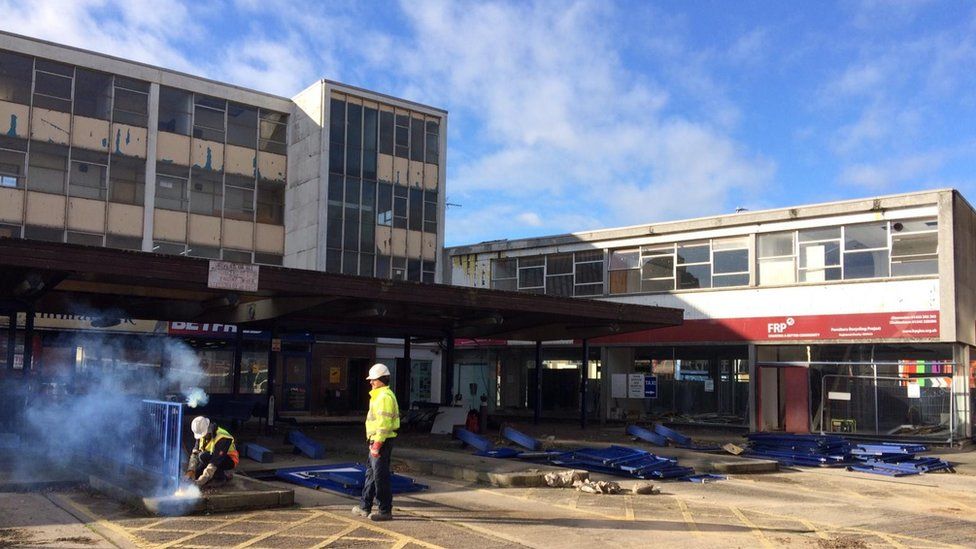Gloucester's 'missing' monastery archaeological dig to begin
- Published

Archaeologists are hoping to find a "missing" medieval monastery during a dig in Gloucester.
The remains of Whitefriars monastery are believed to lie beneath the old bus station site, which is to be demolished over the next few weeks.
It was founded in about 1268 but was mostly demolished in the 16th Century.
A dig is due to take place next month ahead of redevelopment work on the site as part of the regeneration of the city's King's Quarter.
Gloucester City Council archaeologist Andrew Amstrong said it was "one of the most important archaeological sites" outside the old city walls.
'Sinful life'
"Archaeologists in the 1970s found what might have been part of the Carmelite chapel in Market Parade adjacent to the site, and historic maps tell us the remains of Whitefriars ought to be under this site," he said.
He added the religious order of Carmelites, known as Whitefriars, was the last monastic organisation to be founded in Gloucester.
"They're living outside the walls of the city because they're trying to live apart from the sinful nature of everyday life."
There were several other monastic organisations in Gloucester including Blackfriars, Greyfriars, Llanthony Priory and St Oswald's Priory, but Whitefriars was the one least known to historians, he said.
"We know there ought to be part of the church... and we know from historic maps there is a very large barn in the area, that was still standing in the 17th Century."
He said he hoped to find remains of "all the paraphernalia of a monastery" such as cloisters, cemetery, accommodation, kitchens and stables.